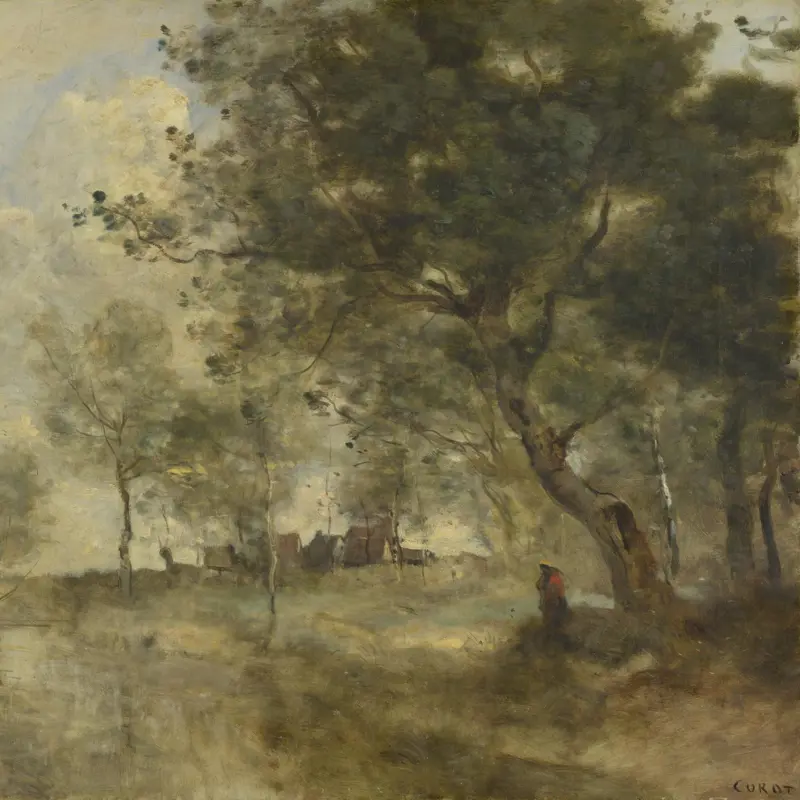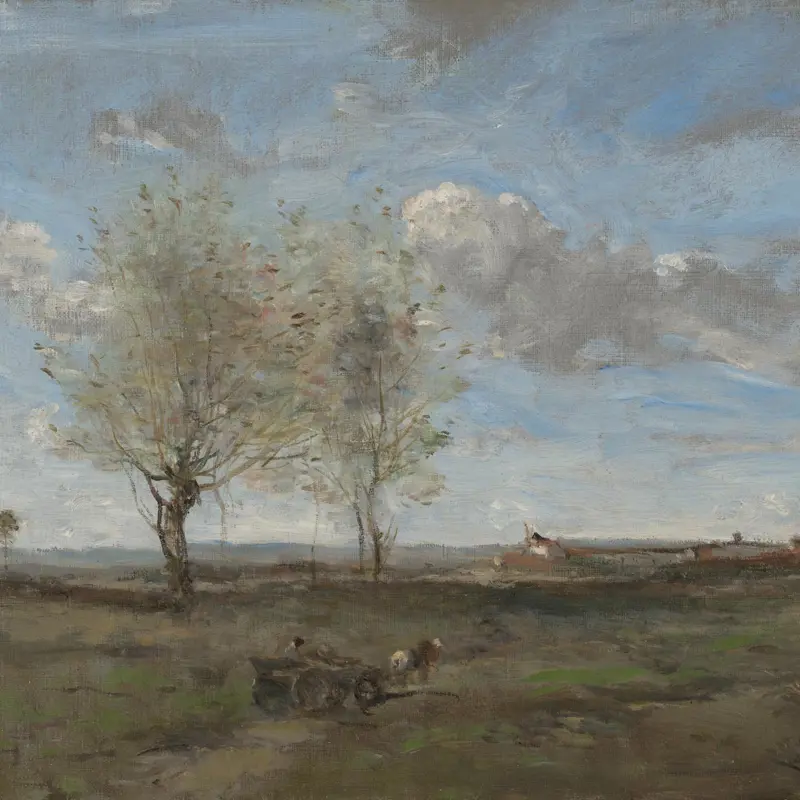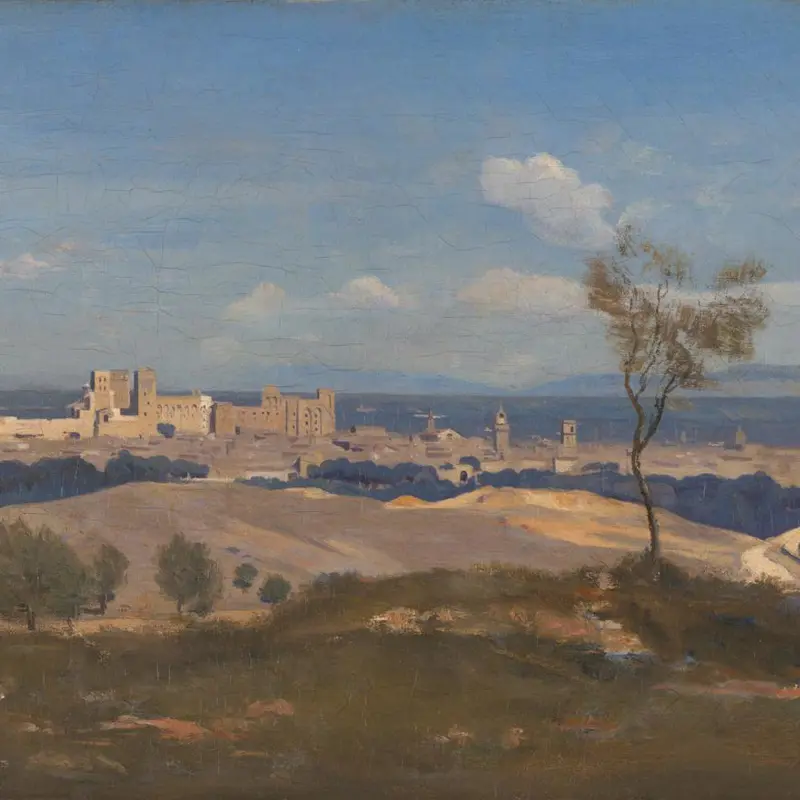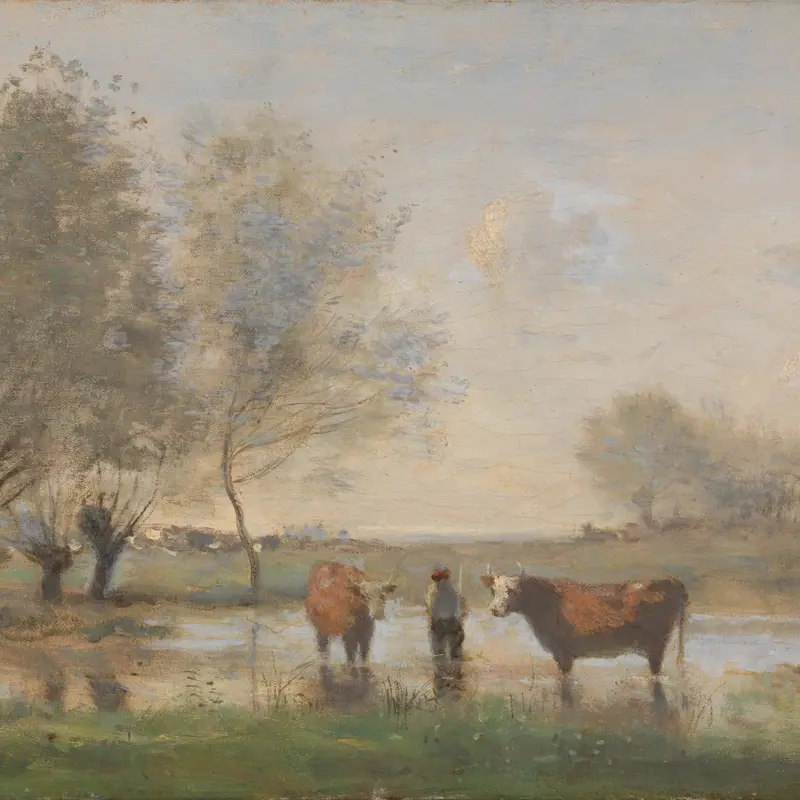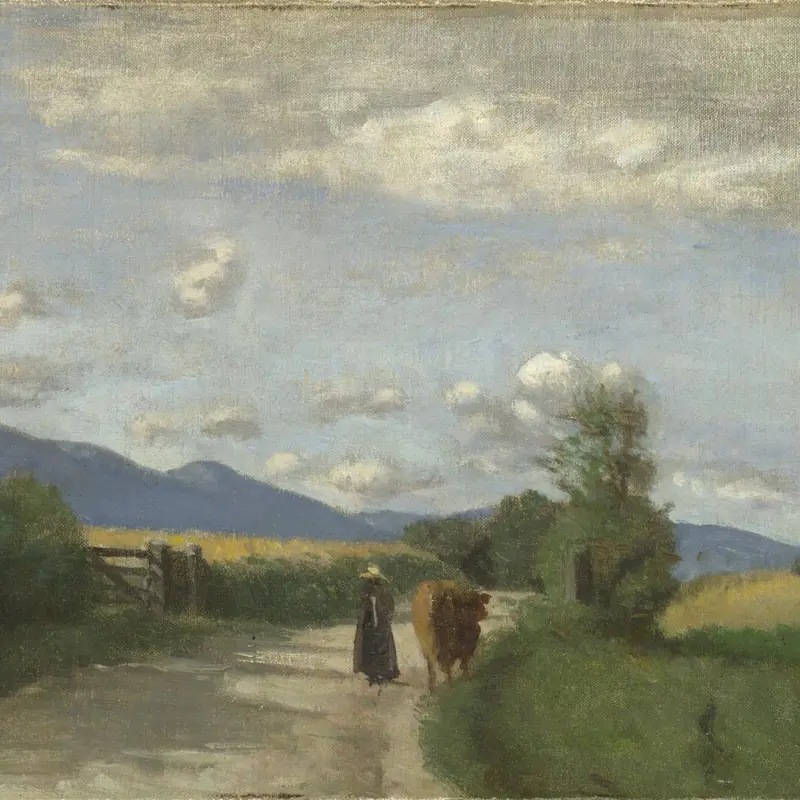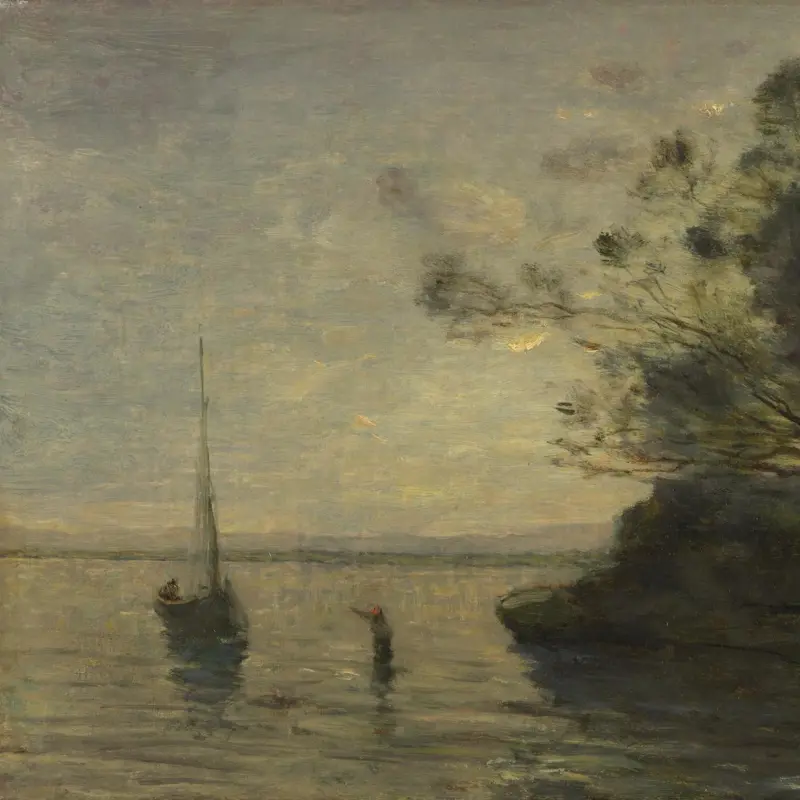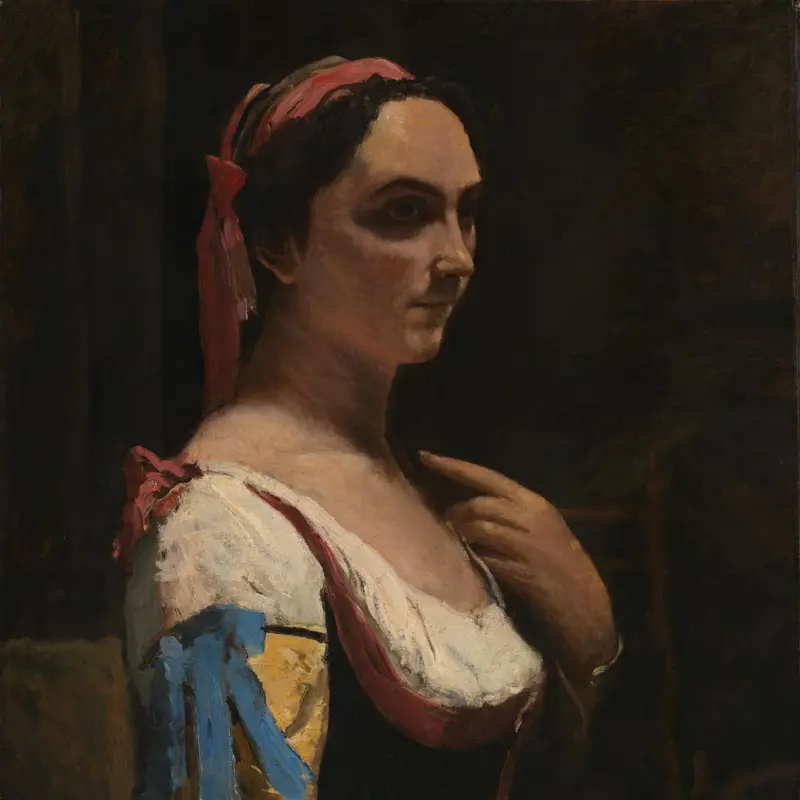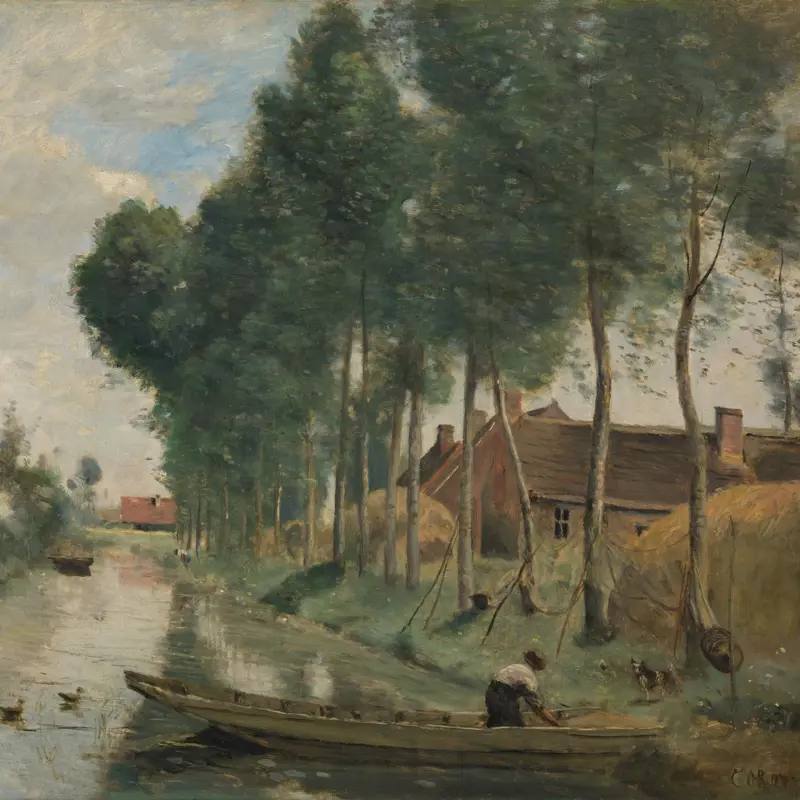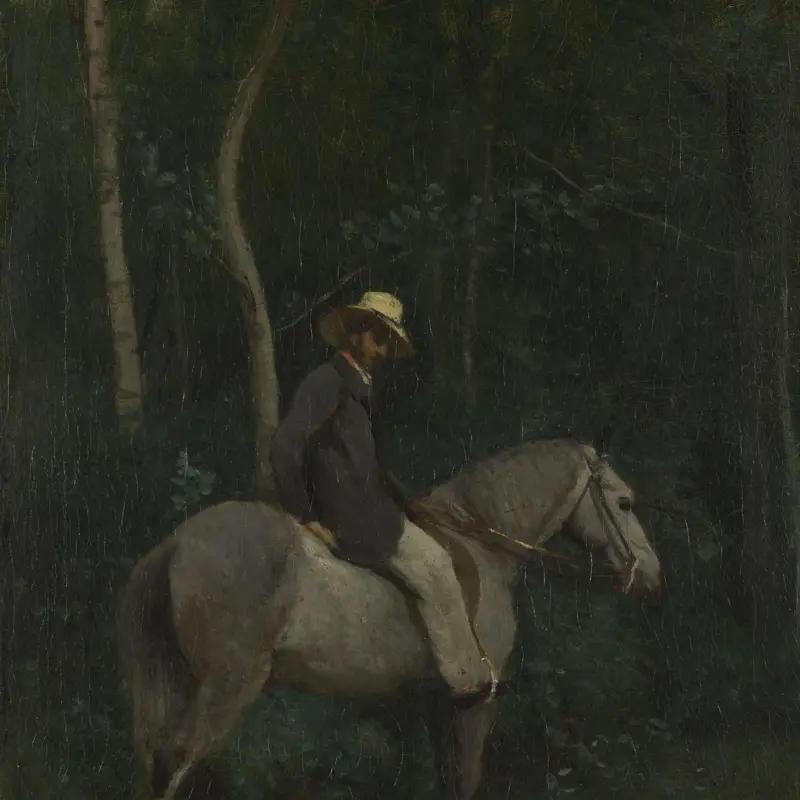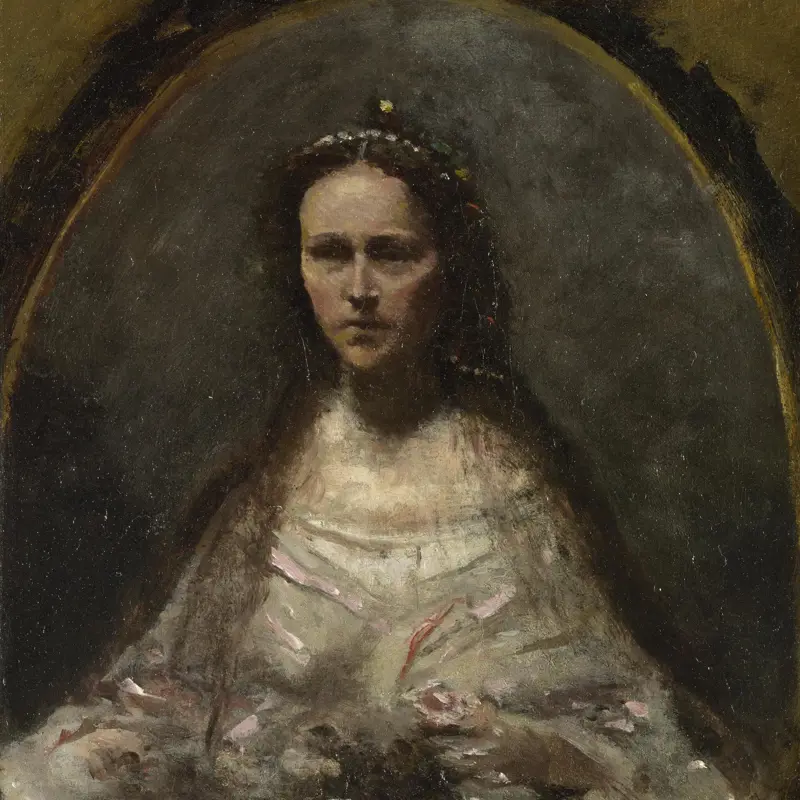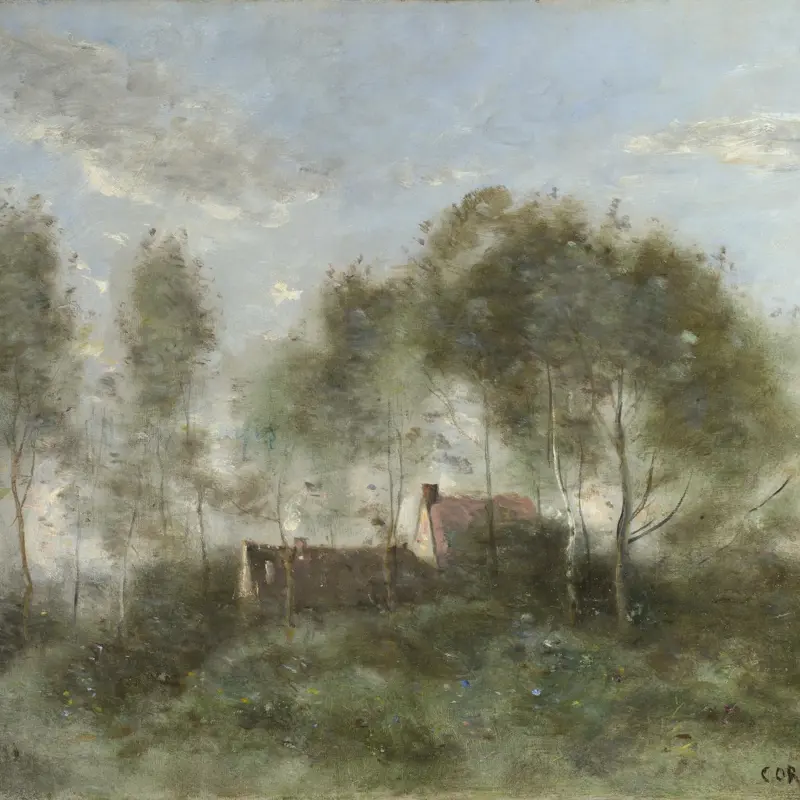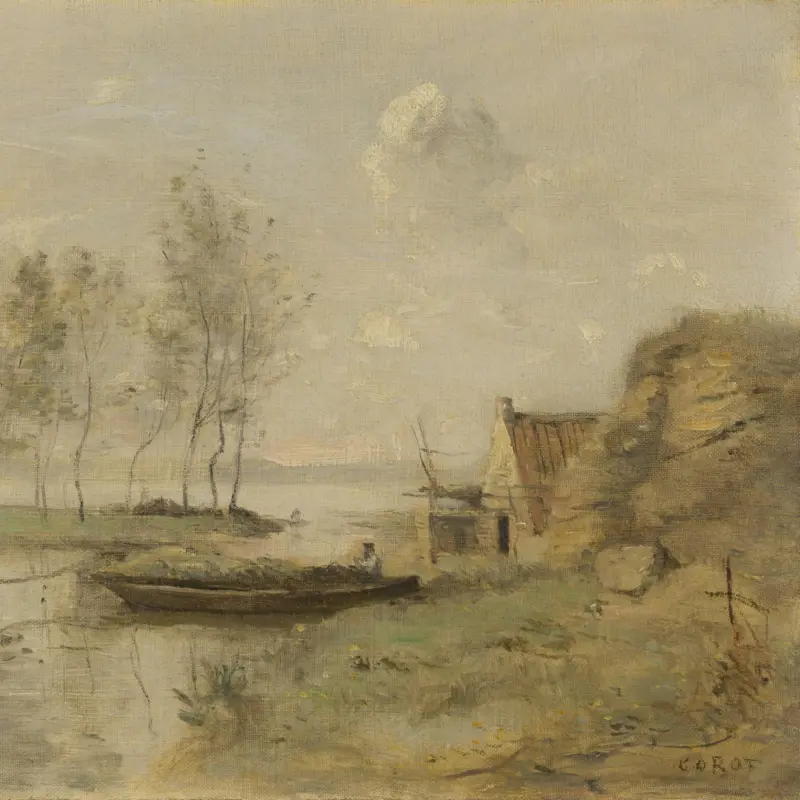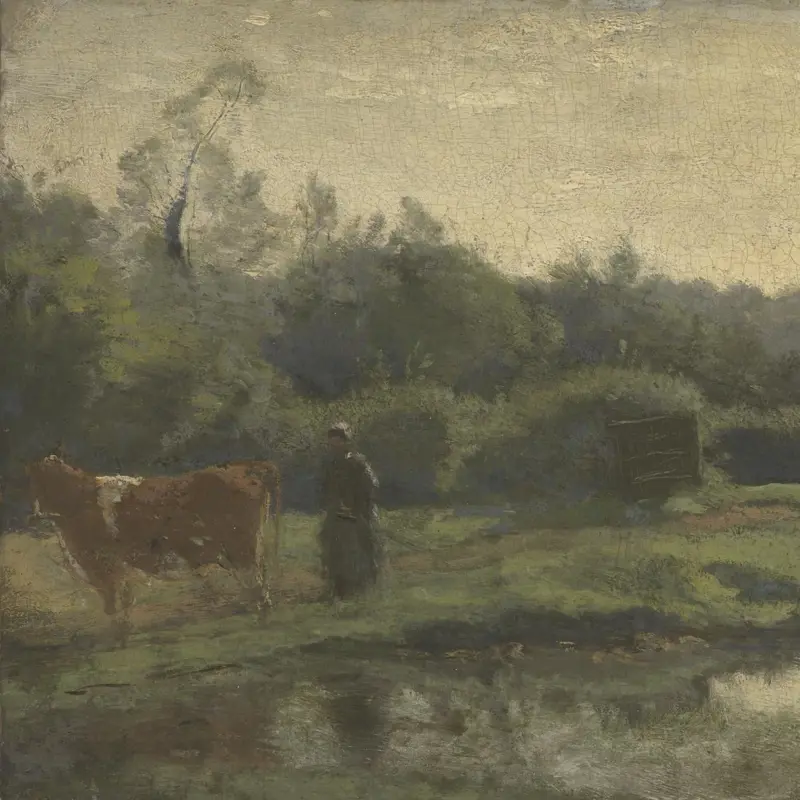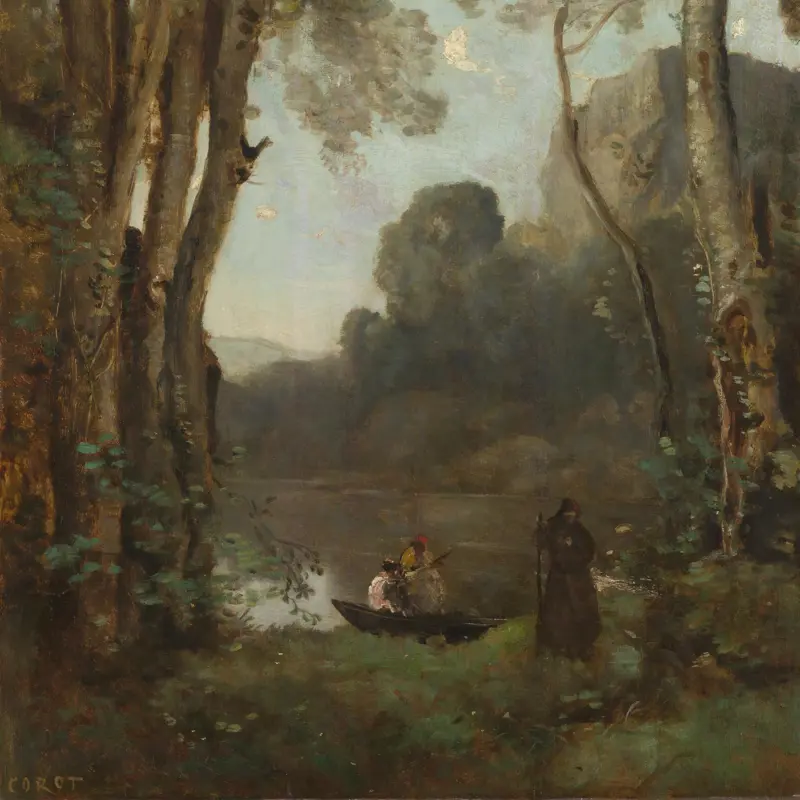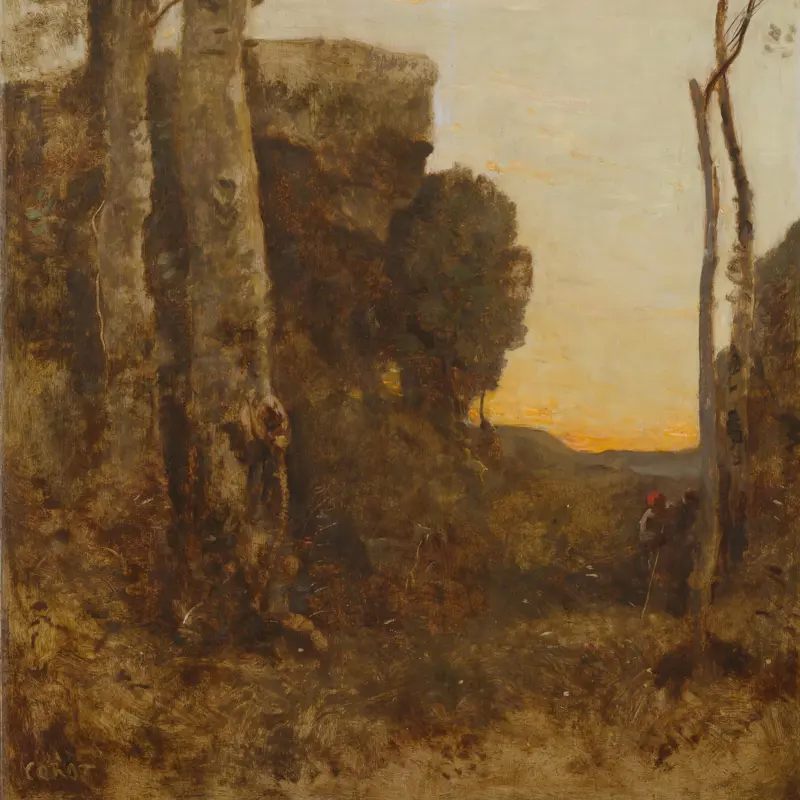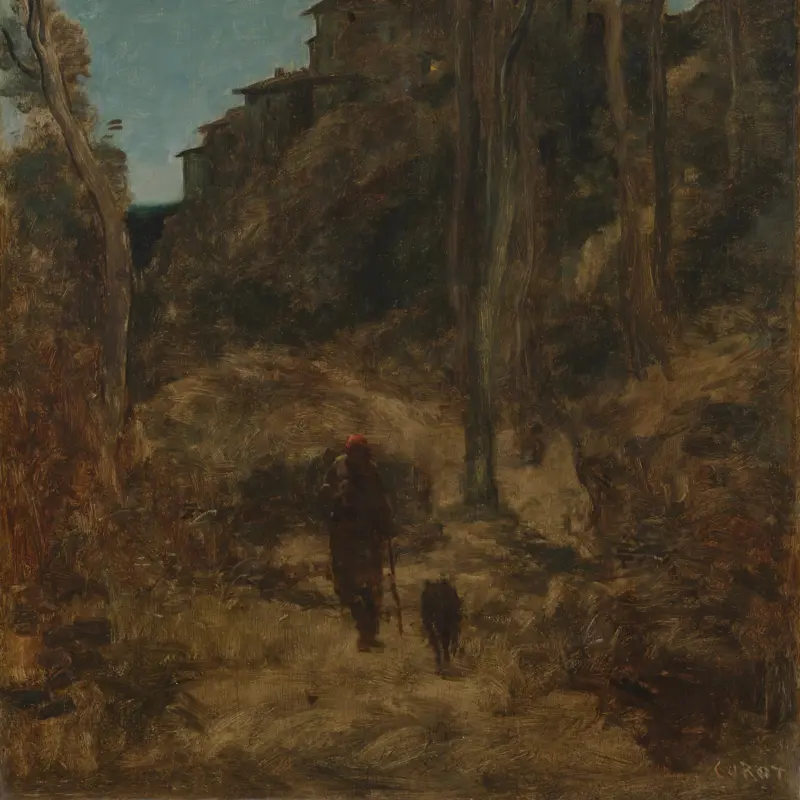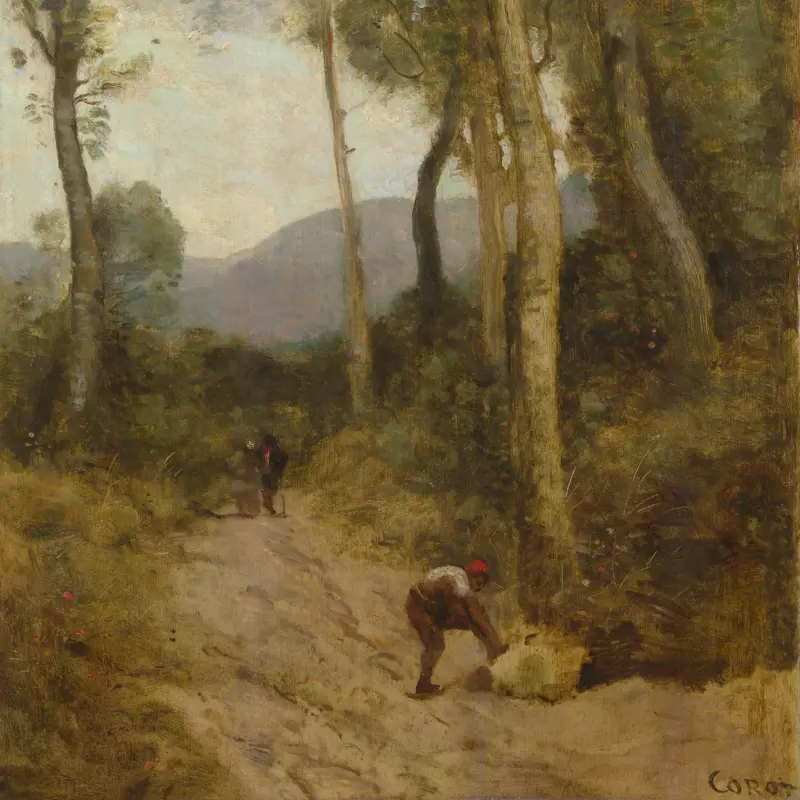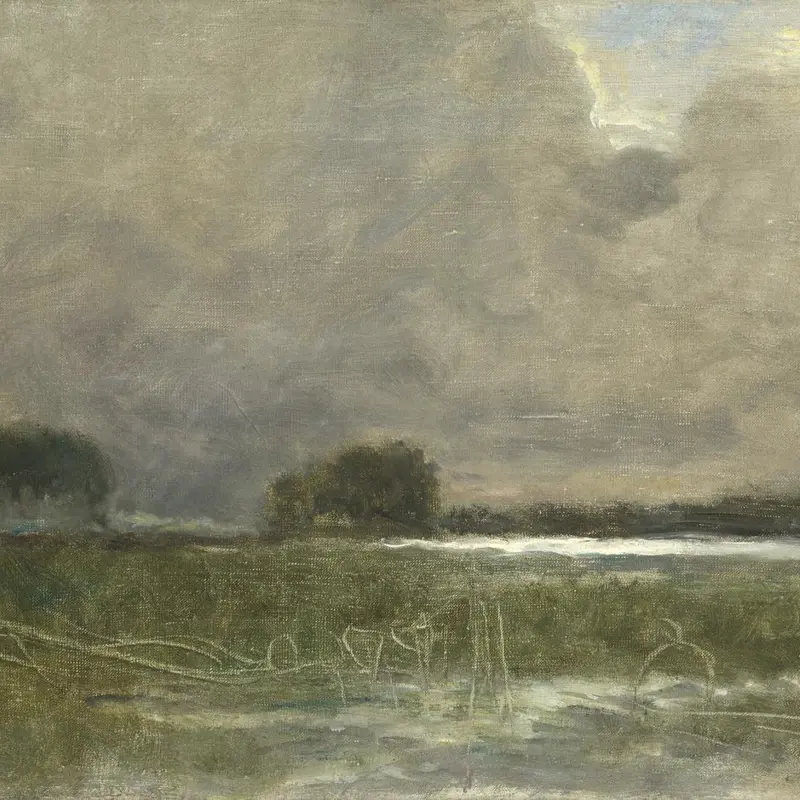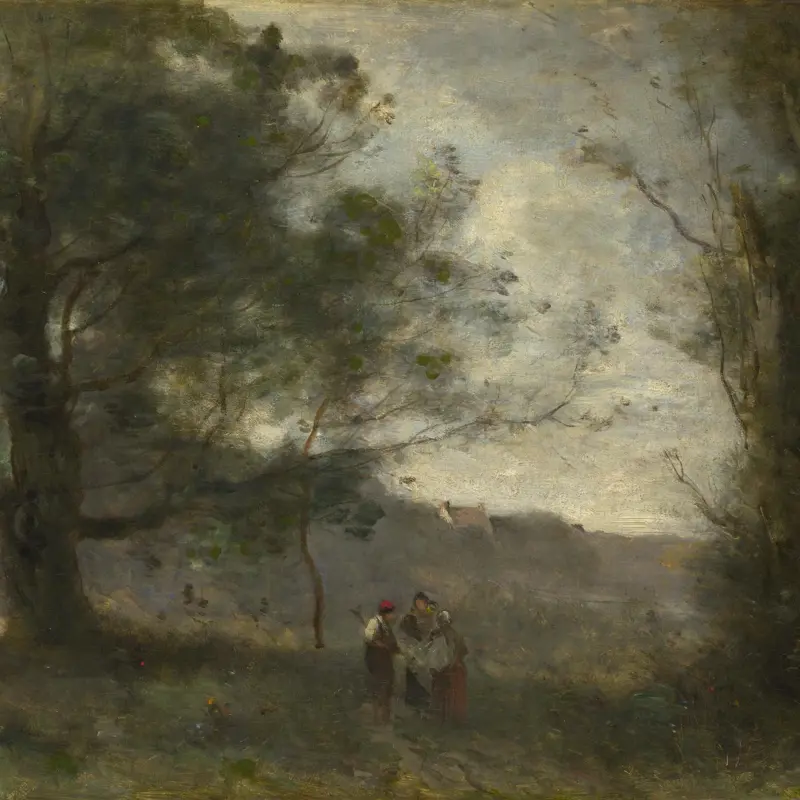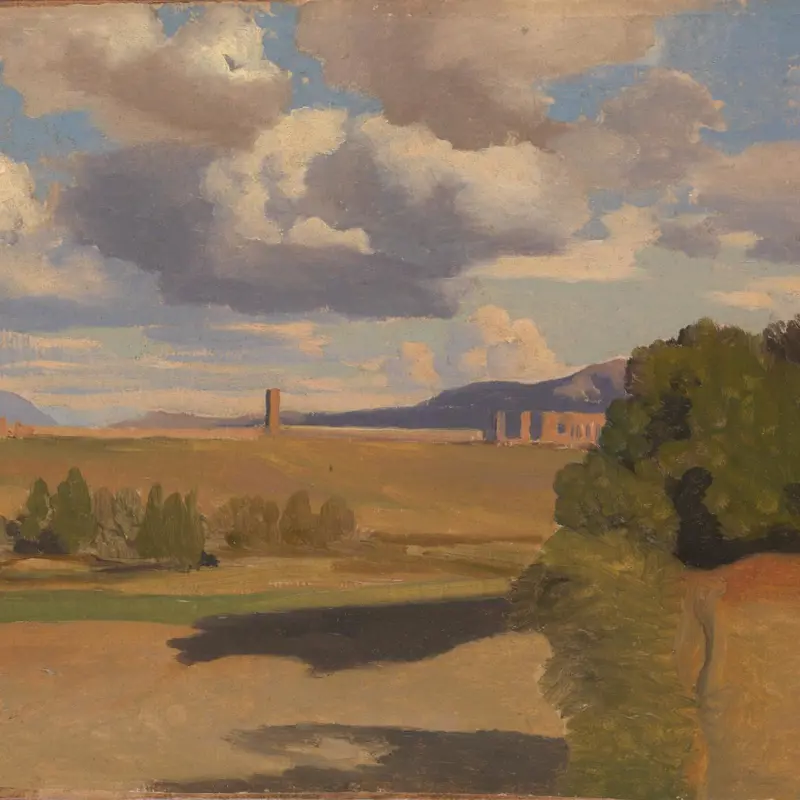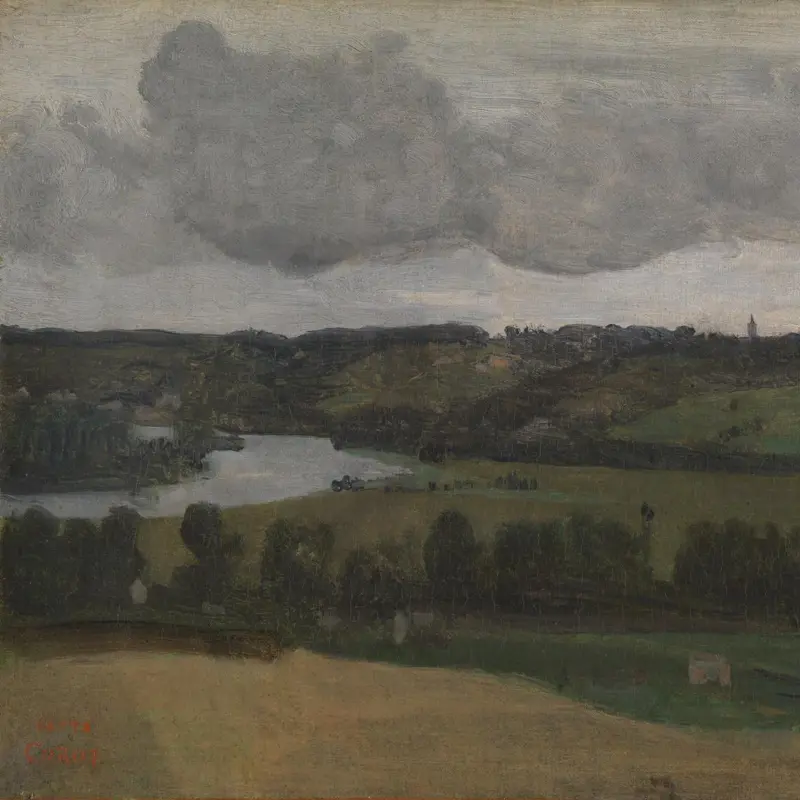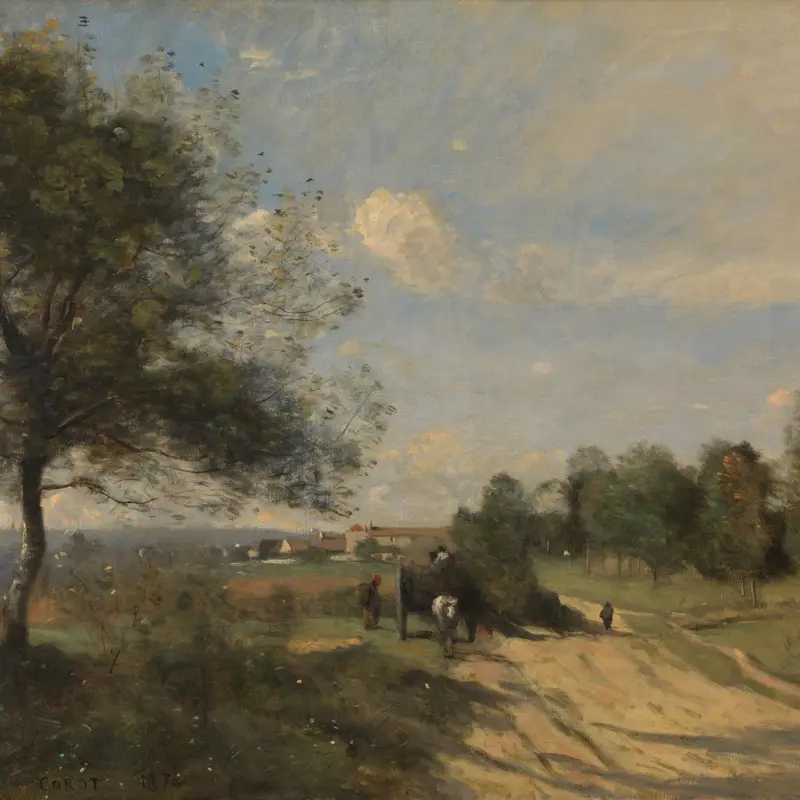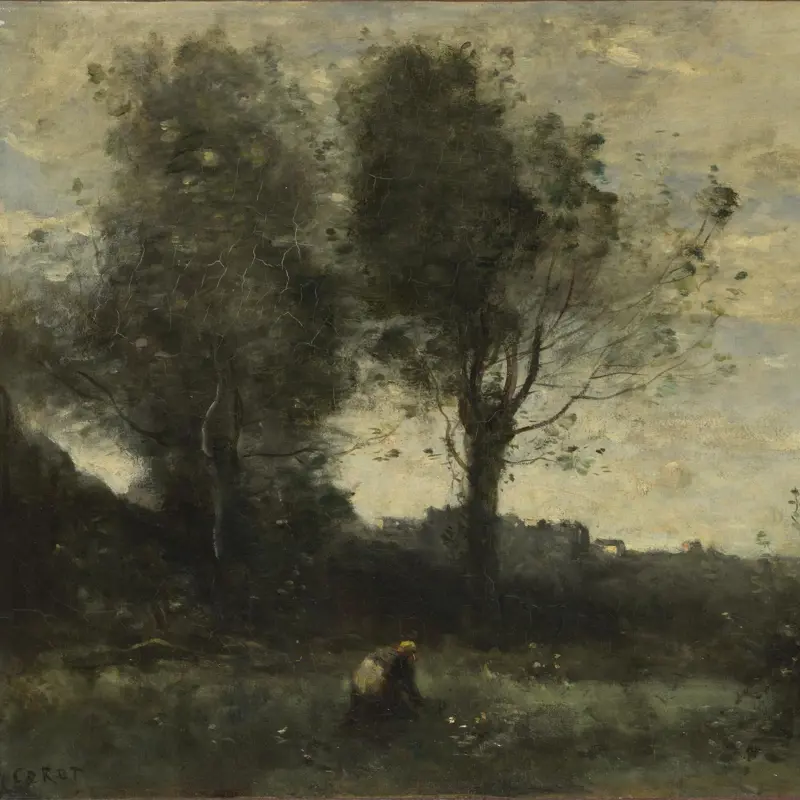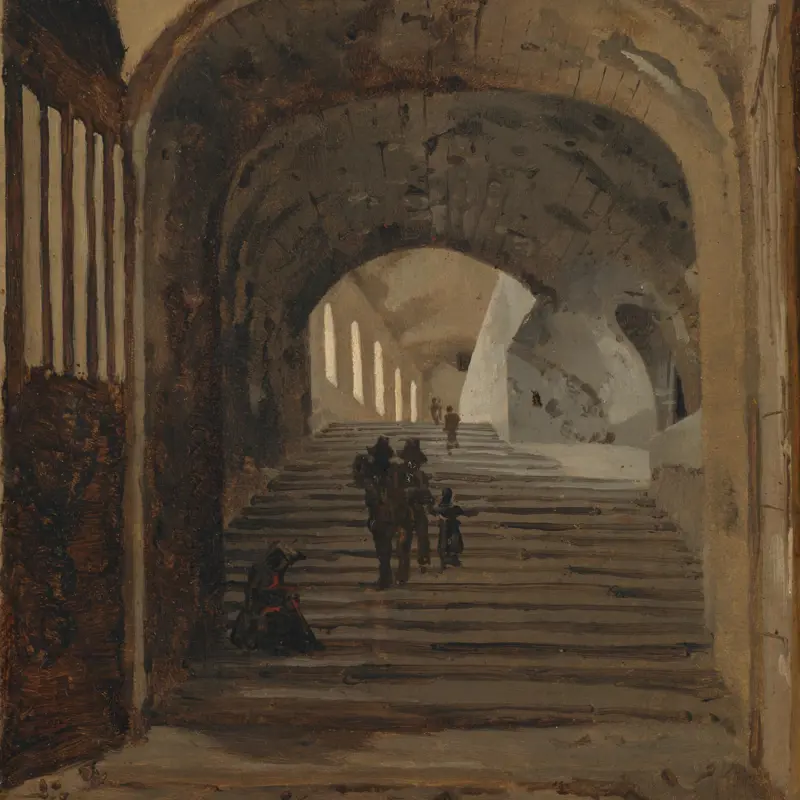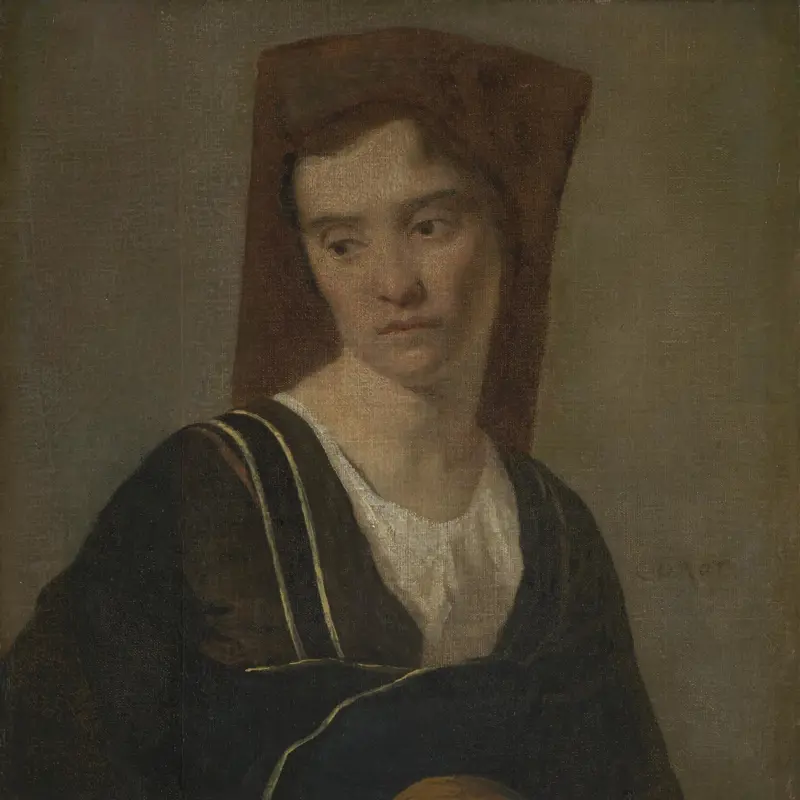Jean-Baptiste-Camille Corot, 'The Leaning Tree Trunk', about 1860-5
About the work
Overview
This idyllic view of elegant trees and a peaceful lake is one of a number of related scenes painted by Corot at this period. The lake is one of those at Ville-d'Avray near Paris, the location of Corot’s family home, and the trees are based on a drawing he had made at Civita Castellana during his first visit to Italy in 1825–8.
In this particular example, which was painted late in the series, Corot has reduced the single birch trunk at the right and the trunk reaching out across the picture to stylised, decorative elements. Both the man in his punt and the woman reaching up to gather twigs make frequent appearances in the artist’s work. The streaks of orange in the boat and in the woman’s cap create bright accents in the pervading silvery green tonality of the scene.
Key facts
Details
- Full title
- The Leaning Tree Trunk
- Artist
- Jean-Baptiste-Camille Corot
- Artist dates
- 1796 - 1875
- Date made
- about 1860-5
- Medium and support
- oil on canvas
- Dimensions
- 49.7 × 60.7 cm
- Inscription summary
- Signed
- Acquisition credit
- Salting Bequest, 1910
- Inventory number
- NG2625
- Location
- Not on display
- Collection
- Main Collection
- Frame
- 19th-century French Frame (original frame)
Provenance
Additional information
Text extracted from the ‘Provenance’ section of the catalogue entry in Sarah Herring, ‘National Gallery Catalogues: The Nineteenth Century French Paintings’, vol. 1, ‘The Barbizon School’, London 2019; for further information, see the full catalogue entry.
Exhibition history
-
2008Camille CorotTokyo National Museum14 June 2008 - 31 August 2008Kobe City Museum13 September 2008 - 7 December 2008
-
2009Corot to Monet: A Fresh Look at Landscape from the CollectionThe National Gallery (London)8 July 2009 - 20 September 2009
-
2014Artistic Exchanges: Corot, Costa, LeightonThe National Gallery (London)7 May 2014 - 3 September 2014
-
2023Masterpieces from the National GalleryShanghai Art Museum East17 January 2023 - 7 May 2023National Museum of Korea2 June 2023 - 9 October 2023Hong Kong Palace Museum22 November 2023 - 11 April 2024Chimei Museum2 May 2024 - 1 September 2024
Bibliography
-
1875P. Burty, Exposition de l'oeuvre de Corot, Paris 1875
-
1884J. Rousseau, Camille Corot, Paris 1884
-
1905A. Robaut, L'oeuvre de Corot: Catalogue raisonné et illustré, Paris 1905
-
1906E.G. Halton, 'The Collection of Mr Alexander Young, I: The Corots', International Studio, XXX, 1906, pp. 3-22
-
1908'The French School in the National Gallery', The Burlington Magazine, XIII/66, 1908, pp. 327-44
-
1946Martin Davies, National Gallery Catalogues: French School, London 1946
-
1957Martin Davies, National Gallery Catalogues: French School, 2nd edn (revised), London 1957
-
1970Davies, Martin, and Cecil Gould, National Gallery Catalogues: French School: Early 19th Century, Impressionists, Post-Impressionists etc., London 1970
-
1973G. Bazin, Corot, 3rd edn, Paris 1973
-
1973R.J.B. Walker, A List of Pictures and Sculpture in 10 Downing Street, London 1973
-
1979National Gallery, 'Pictures Cleaned and Restored in the Conservation Department of the National Gallery, January 1979 - February 1980', National Gallery Technical Bulletin, IV, 1980
-
1981J. Mills and R. White, 'Analyses of Paint Media', National Gallery Technical Bulletin, V, 1981, pp. 66-7
-
1999A. Burmester et al. (eds), Barbizon: Malerei der Natur - Natur der Malerei, Munich 1999
-
2001
C. Baker and T. Henry, The National Gallery: Complete Illustrated Catalogue, London 2001
-
2001S. Herring, 'The National Gallery and the Collecting of Barbizon Paintings in the Early Twentieth Century', Journal of the History of Collections, XIII/1, 2001, pp. 77-89
-
2005V. Pomarède et al., Corot: Naturaleza, emoción, recuerdo (exh. cat. Museo Nacional Thyssen-Bornemisza, 27 June - 11 September 2005), Madrid 2005
-
2019Herring, Sarah, National Gallery Catalogues: The Nineteenth Century French Paintings, 1, The Barbizon School, London 2019
Frame
Crafted entirely from composition in France in the mid-nineteenth century, this frame is a small-scale reproduction of a Louis XV style frame. Corot is regarded as a forerunner of the Barbizon School of painters, a group renowned for their depictions of picturesque landscapes. The ‘Barbizon’ frame surrounding Corot’s painting reflects this focus on nature, with delicate floral motifs sprawling across its swept outlines. The back edge is adorned with a stylised shell motif in a fluted design, topped with S- and C-scrolls that showcase its craftsmanship. Between the corner and centre cartouches, shell motifs and leaves rest on an intricately cross-hatched profile that rises towards the sanded flat, accentuated by a French acanthus-leaf pattern along the sight edge.
Soon after the frame’s arrival at the Gallery, it was modified to include a glazing door to protect the artwork. In 1980 the frame underwent its first repair. Made for Corot’s The Leaning Tree Trunk, this is considered the original frame for this painting.
About this record
If you know more about this work or have spotted an error, please contact us. Please note that exhibition histories are listed from 2009 onwards. Bibliographies may not be complete; more comprehensive information is available in the National Gallery Library.

